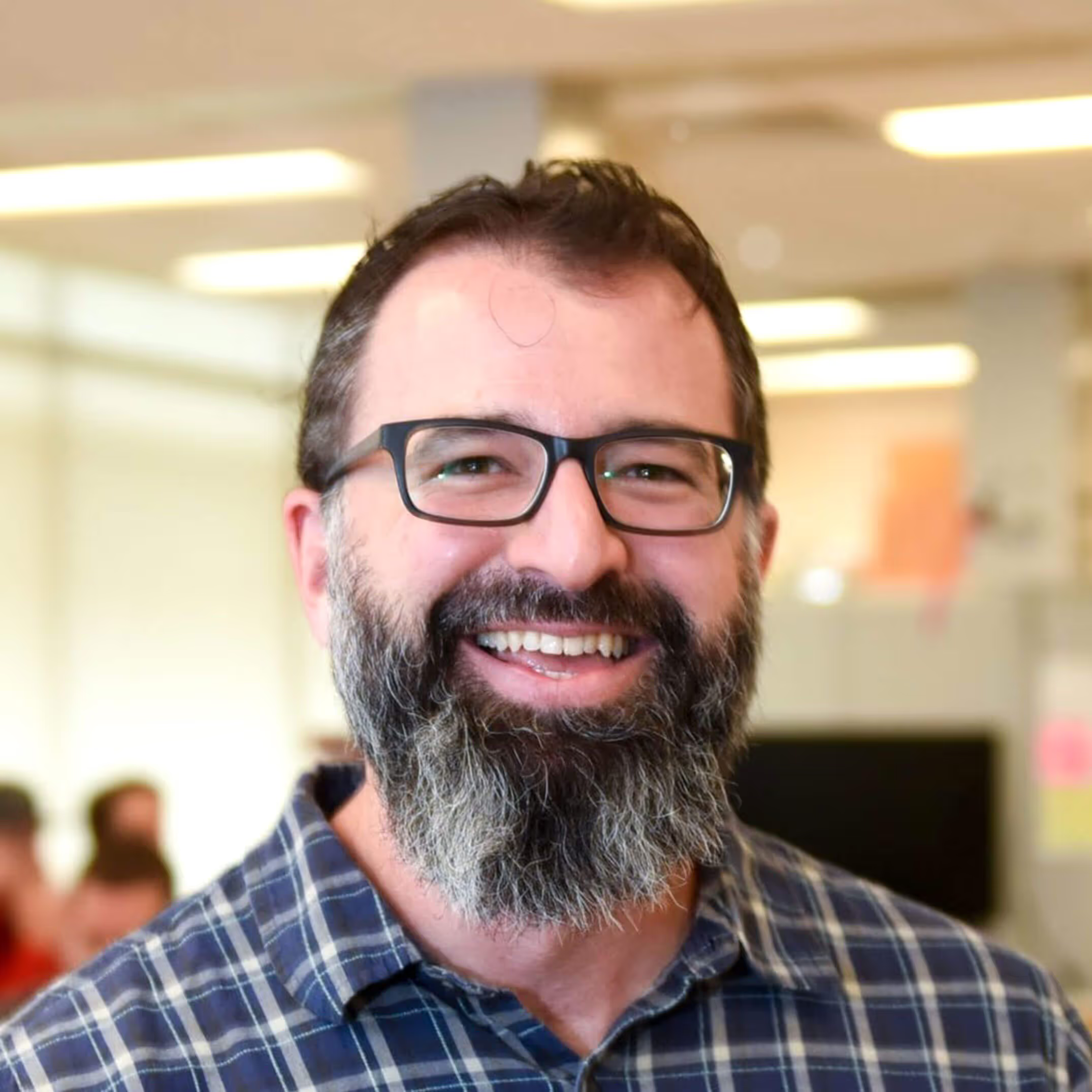Through the years, I’ve heard many questions of the following nature:
- A graduating senior in college might ask, “I’m looking at jobs, can you tell me what’s the difference between a ‘Product Design’ and ‘Product Development’ position?
- A prospective Trig client might ask, “How much design versus development work do you do?” or “What are your development capabilities?”
I thought this topic might be a fun one to explore. Here are my thoughts, and I’d love to hear yours too.
Some Context

Before diving right into “Design” versus “Development” I want to look at “Research” and “Development.”
Examining an entire product lifecycle, consider the roles of Research, R&D, and Development. I’ll use examples from transportation to medical devices as illustrations throughout this exploration (and note the image sketched up on my whiteboard as a handy reference).
Using the sketch as a reference point; research is as far upstream in the process as you can go. It’s the world of basic science research, an exploration of the universe, and study of matter and energy. All the way to the right, downstream, are tangible, useful, everyday things. The middle area is a gray section that overlaps R&D.
Let’s consider a specific example, like a new fuel cell to power automobiles. This could be an electric fuel cell, or maybe it’s hydrogen. In any event, during the research phase, scientists are trying to understand if it’s even possible to store and retrieve energy using various processes and materials. This type of research could last for decades.
The later stages of the research phase might include activities like optimizing for total energy stored, method and time to store the energy, size and weight of the fuel cell, and safety.
I would define the R&D Overlap Phase as a mostly commercial endeavor in which the basic science of the fuel cell is nearly fully, if not completely fleshed out and well understood. However, these fuel cells have never been used in the commercial production of a car, so, there’s a lot of research still to be done in understanding how we are going to convert that stored energy into motion. For example, we are no longer in the realm of basic science research when exploring how a drive shaft might be constructed in an electric car versus a traditional gas burning engine, but we are still exploring. We are somewhere in the gray area of R&D.
By the time we get to the development phase, those basic science research and R&D questions are more or less fully answered. Development is about pulling all the pieces together and getting a production vehicle out of the factory, on to the showroom floor, and ultimately on the road. (With or without a driver, the way technology is headed these days.)
Please note that this process, as described, seems to suggest that basic science research is the start of the process, or is necessarily occurring prior to the R&D and Development phases. Instead, the feedback arrows in the simple sketch are to indicate a cyclical nature of the process. Just like water flows from upstream to downstream; it doesn’t mean the water originated at the top of the stream. It is rather a complex cycle of evaporation back into the atmosphere at any stage.
A Complete Picture
So where does Design fit into this picture?
In the research phase, we can design an experiment.
In the development phase, we can design a car.
In my opinion, design exists along the entire continuum. It’s not design then development, but rather design AND development. The ancient roots of the word “Design” have meanings such as to indicate with a mark or sign and to have a particular purpose or intention. Design is about asking questions, and asking the right, or most meaningful questions. What basic science research can I do today to have the most impact on society tomorrow? What mode of transportation should we develop first when implementing this new fuel cell technology? Who will be the first to adopt such a technology? What does a “car” look like for those early adopters? Is it even a car? Or, is it a truck? Maybe first to market adopters will be coming from the trucking and logistics industry. It is this type of exploration in asking questions that is at the core of design thinking, to ensure that the intended purpose of research, R&D, and/or development is meaningful.

In the context of Trig, we are an industrial design firm. The industries we focus on are consumer products, durable goods, and medical devices. If we were to identify an underlying theme tying them all together, it’s really about products that promote health, happiness, and wellness. What we design ranges from consumer insight studies, to products, to brand assets.
Examples of how design thinking informs insights, products, and brand assets:
An Insights project may be defining a particular purpose or intention, or otherwise unmet need, job to be done, or outcome we are looking to accomplish for an end customer. Something like “minimize the people needed and response time required to get saline to patients in vascular shock” in a case like our client 410 Medical. What are all the ways this can be done? Who are all the stakeholders involved in the process?
A Product Design project may take a specific concept to accomplish that saline delivery, and be very intentional about designing it for the stakeholders and their specific context.
A Brand Assets project is about being precise with respect to the psychology of those stakeholders, and what will attract them to use that particular solution. Marketing and brand design are puzzles to be solved with many people to consider.
Trig is not specifically a research company, however we can work with research groups to design experiments with intention. Trig is not specifically a development company, but we can work with developers (of electronics, of mechanical devices, of software applications) to develop products with intention.

